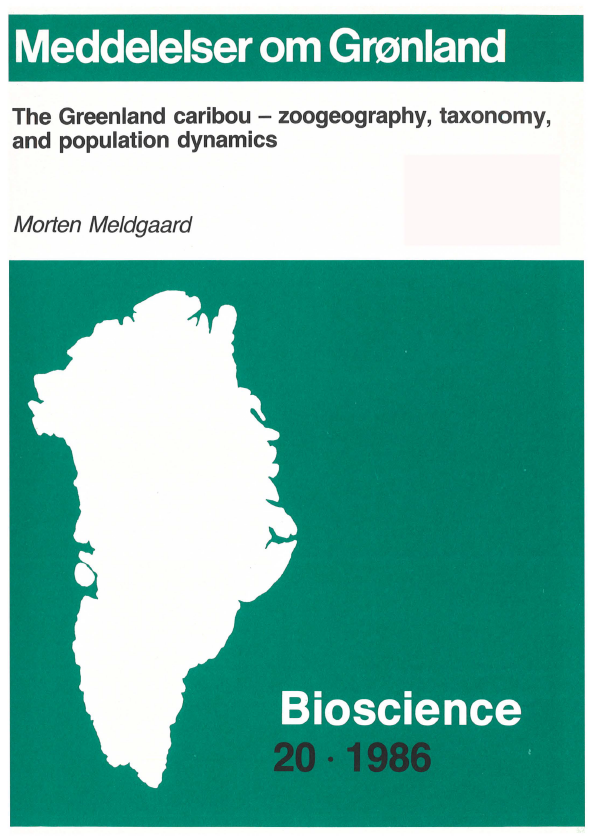The greenland caribou - zoogeography, taxonomy, and population dynamics
DOI:
https://doi.org/10.7146/mogbiosci.v20.142345Abstract
A comprehensive survey of all available geological, archaeological, historical, ethnohistorical, statistical, and game-biological data concerning the past and present status and distribution of the Greenland caribou is given. Based on this information a reconstruction of postglacial caribou zoogeography is presented. The main conclusions are: (1) Prior to c. 6000 BC small (Rangifer tarandus pearyi sized) caribou migrated from Ellesmere Island into Greenland (three new C-14 datings are presented), (2) prior to c. 2000 BC large (Rangifer tarandus groenlandicus sized) caribou migrated across Nares Strait and/or across Davis Strait to the northern parts of West Greenland, (3) c. 1500 BC West Greenland was inhabited by both large and small caribou separated by Sukkertoppen Iskappe, (4) between c. 1500 BC and c. 1000 AD the small West Greenland caribou disappeared, (5) from c. 6000 BC to c. 1300 AD caribou have periodically inhabited North Greenland, (6) prior to c. 300 AD the isolated Ammassalik region was colonized by caribou either from Northeast Greenland or from Southwest Greenland. The Ammassalik caribou were quite dwarfish and they became extinct after c. 1100 AD (7 new C-14 datings are presented), (7) c. 1900 AD the small Northeast Greenland caribou became extinct, (8) through the last 1000 years the range of the Greenland caribou has been reduced through population extinctions starting in Southeast Greenland and progressing north and south along the coasts leading to the present concentrations in central West Greenland and Inglefield Land.
These major zoogeographical events are the result of recurring population fluctuations and related distributional changes. In West Greenland these fluctuations have been recorded through the last 250 years. A number of features characterize changes in population size and distribution: (1) The duration of a population cycle varies from 65 to 115 years, (2) population decrease (and increase) is drastic often exceeding 90% of the population, and in some cases extinction is the end result, (3) fluctuations in different caribou populations in major geographical areas appear to be synchronized, (4) when the populations increase in numbers they expand their ranges while range contraction is associated with population declines.
The population fluctuations are primarily caused by climatic changes and secondarily by predation, overgrazing, and other factors.

Downloads
Published
Issue
Section
License
Coypyright by the authors and the Commision for Scientific Research in Greenland / Danish Polar Center/Museum Tusculanum Press as indicated in the individual volumes. No parts of the publications may be reproduced in any form without the written permission by the copyright owners.

